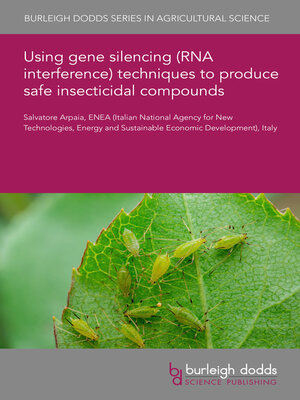Using gene silencing (RNA interference) techniques to produce safe insecticidal compounds
ebook ∣ Burleigh Dodds Series in Agricultural Science
By Dr Salvatore Arpaia

Sign up to save your library
With an OverDrive account, you can save your favorite libraries for at-a-glance information about availability. Find out more about OverDrive accounts.
Find this title in Libby, the library reading app by OverDrive.



Search for a digital library with this title
Title found at these libraries:
| Loading... |
RNA interference (RNAi) is a natural defense mechanism in organisms that detects and neutralizes foreign genetic materials, particularly viral RNA. This process involves the creation of single-stranded micro RNAs that target and inhibit complementary messenger RNA (mRNA), thus halting gene expression. The discovery that external double-stranded RNA molecules can trigger RNAi has led to significant interest in academic and industrial circles, resulting in applications like genetically modified crops and insecticidal compounds. The first RNAi-based insecticide received commercial approval in the USA in 2023. The key advantage of this biotechnology lies in its high specificity, as it targets unique sequences in the mRNA of the intended organism. However, the effectiveness of RNAi varies between species due to factors such as dsRNA degradation, cellular uptake, and genomic variations. While evidence suggests limited risks for mammals and vertebrates, comprehensive evaluations are essential to address potential non-target effects and the risk of insect resistance.






